We’re past the days when cutting boards were plain and simple; for a stylish accompaniment to your kitchen look no further than this unique cutting board guide.
This unique cutting board guide will cover every decision making aspect of buying a board. Unless you’re prepared to ruin your beautiful countertops, a good chopping board is an essential part of any kitchen. And the kind of board that we choose is an expression of our own personal style and taste. Now, we have so many choices available for creating a modern flair in our kitchen spaces. And if aesthetics are a prominent aspect of your decision making, you’ll want a beautiful board which can move seamlessly from the kitchen food prep space to your table decor.
So, Which Material Should I Choose For My Unique Cutting Board?
Glass?
Plastic and glass are popular choices for chopping boards. A glass cutting board is a fairly robust choice which is easy to clean, won’t be stained by food, and can go in the dishwasher. However, your knives won’t thank you for choosing a glass cutting board. With it being such a hard surface, glass will blunt your knives over time. In turn, a blunt knife causes more cuts on your chopping surfaces because you have to press down harder. It isn’t food which causes knives to lose their edge, it’s the cutting surfaces. The harder the surface, the faster your knife edges will dull.

Plastic?
Whilst plastic cutting boards are often the most cost effective option, they generally don’t compare to the look and feel of a solid wooden board. The benefits of plastic boards is that they are lightweight and impervious, being able to go in the dishwasher with no fear of damage occurring. However, they can be rough on knives and do not have the same self-healing and antibacterial properties as wooden boards.
I am not a fan of plastic chopping boards, therefore they will not be featured in this ultimate cutting board guide.
Another issue with using a plastic board is that…you’re using plastic.
We have never been more aware of the damage that plastic does to our environment. As a society, we are all more conscious about the material choices that we make now. In 2016, The Guardian noted that our use of plastic bags in supermarkets plunged by an incredible 85% in the first six months of the introduction of the 5p charge.
When a wooden board becomes worn after years of use it can be recycled to create something new. However, plastic is biologically indestructible. If we decide to get a new chopping board, the old plastic one will sit in a landfill for hundreds of years, never decomposing.
Whilst plastic boards are typically easier to store in a kitchen space, being thinner and lighter than most wooden boards, they don’t tend to last as long as a wooden board. Plastic chopping boards will dull knives quicker, and gouges and cuts will show more visibly than wooden boards.
The Magic of Wood
I am a big fan of wooden boards because of their rustic beauty. Wood is timelessly classic, adding a handsome touch to any interior. A beautiful and unique cutting board can be the centre piece of any kitchen counter. Continue with my unique cutting board guide to see my wooden board creations.
Wooden boards have been proven to be more hygienic to use than plastic. Wooden boards have properties which allow them to fight bacteria and self heal.
Wait, what? Wood can self heal?! The Power of Nature, Hey!
Yes! Cuts made from knives on wooden boards are less visible, and over time they will close up and repair. Another benefit of using wood over plastic is having the ability to sand away any scratches which have developed from daily use, giving you a fresh and new-looking board.
So Can I Put My Wooden Board In The Dishwasher?!
Sorry, but no.
A negative factor to using a wooden board is cleaning them. Wood cutting boards cannot be put in a dishwasher, or left to stand in water. This means that wooden boards need to be hand washed, and in our technology driven society where so many of us rely on dishwashers, this can be a bit of a nightmare.
Many people prefer to use plastic boards because they are seemingly safer to use. They are easy to clean, so therefore they should harbour less bacteria. Right?
Wooden Boards Are More Hygienic Than Plastic.
Over the years, several University studies have shown that wooden boards are actually more hygienic to use than plastic boards.
In the mid nineties, Dean O. Cliver, Ph.D conducted a study to compare the disinfecting of plastic and wooden cutting boards. This study in particular states that plastic surfaces which are knife scarred are impossible to clean and disinfect manually. Whereas bacteria on wood did not remain on the boards once cleaned. Any bacteria found inside the wood did not multiply, and gradually died. In this study, more bacteria was found on plastic surfaces than wooden.
This is because hardwood has natural antibiotic properties which kill bacteria. They have antimicrobial compounds which kill microorganisms and stop their growth. The power of nature, hey?!
I will discuss several kinds of wood in this unique cutting board guide, each one having it’s own unique benefits.
Bamboo Wood
Bamboo wood is considered the sustainable choice for a chopping board material. Technically being a hard grass, and not a tree, bamboo is a fast-growing and renewable source. A normal bamboo shoot will fully mature within 3-6 years, whereas your typical maple tree can take over 25 years to mature. Due to it’s speedy harvesting rate and affordability, bamboo is one of the most popular choices in this unique cutting board guide.
Bamboo boards take minimal maintenance to keep them looking good. It is a dense wood which is not easily cracked, scarred or stained. The hard wood density means that bamboo resists retaining water, therefore it will not crack or warp as easily as other wood options. That being said, I still strongly recommend you follow my care instructions listed below, and you do not leave your bamboo board to soak in water.
Mango Wood
Mango wood is beautifully unique because of the kaleidoscope range of colours and patterns in it’s grain. The mango tree is initially grown for fruit, but it tends to be cut down after several years when it no longer produces good quality harvest, making it a byproduct of the food industry. By using the wood from the old trees to create cutting boards, this allows for new mango trees to be planted. In turn, this proves mango wood to be a good and sustainable choice for a chopping board material.
Strong and durable, mango wood is long lasting and excellent choice for a cutting board. It comes in many shades, from light to dark, making each wooden piece completely unique.
Olive Wood
I think olive wood is one of the most beautiful woods to work with. Some of my favourite pieces in this unique cutting board guide are made from olive wood. It is long lasting and durable, with each piece having it’s own individual pattern. The olive wood that I use is responsibly sourced from trees which have come to the end of their natural fruiting life. The trees are protected by government regulations, making it an ethical and sustainable material to work with. Only very old trees are cut down, and they are replaced with new trees.
Olive wood is very hard and smooth, making it a great choice for a cutting board. The unique wood pattern gives each board its own personal character. Being a hard wood means that it is a non-porous wood, preventing it from absorbing and imparting food juices and flavours. Olive wood has smaller pores than most woods, making it a smoother surface to prepare and serve foods. This, in turn, means that it does not harbour bacteria.
Creating My Artisan Boards
Each of my artisan boards are hand decorated by myself. It’s a process with many steps over several days.
Firstly, I apply a stretch of tape across the board to create that clean neat line for the resin. I protect the remainder of the board with cling film, so that any excess resin doesn’t leave a mark. I like to keep some of my steps and processes secret because I am aware that my work could be copied by others!
When I create my work I always have a plan in mind. I know what colours I will be using, what kind of shapes and patterns I will be creating, and the sort of mood that I am aiming for. However, the exact final result of how the board will look is, to a degree, out of my control.
Working With Resin
A chemical reaction occurs when working with resin - colours will fuse together, but not create a muddy mess. Instead, abstract patterns are created through various techniques that I employ. I like to create collections of colours, but because of this chemical reaction process, the artwork on every board is completely unique.
Once I am happy with my artisan boards I leave them alone for 24-72 hours so they can fully dry. Resin is extremely sticky and messy when wet. But once dry, it becomes beautifully smooth and shiny, making it an extremely tactile surface. This is why I love to work with resin - it’s such an adventure from start to finish!
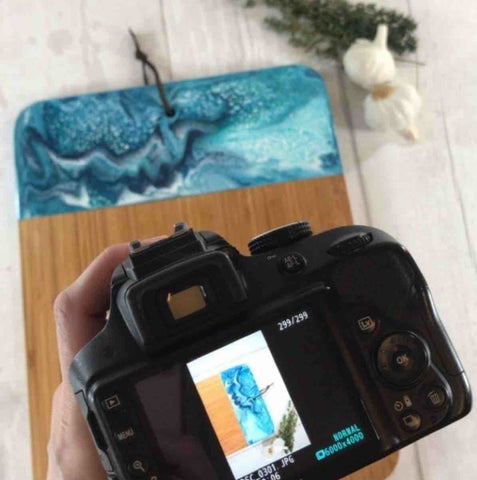
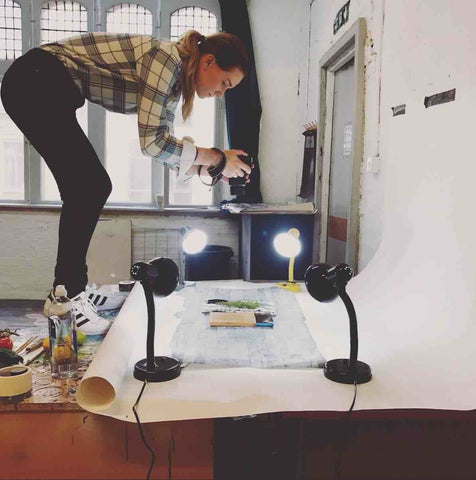
What Will I Use My Board For?
Before you buy one of my boards, you need to consider what you will use it for. This in turn will inform the size and shape of board that you choose.
Will your board be used to regularly prepare food? Chopping various vegetables and bread? A larger board with more surface area for food prep like this one might suit your needs:
Is the board more for serving and decorative purposes? A small and uniquely shaped board like this might be best for you:
Cheese and Wine Night
When hosting a dinner party, or even just having a cosy night in with a glass of wine, we want to present our cheese selection on a board that is worthy for the job. Serving a variety of cheeses on a resin decorated board gives the sense of true luxury dining. The presentation and display of your cheese is just as much part of the experience of eating said cheese. Creating that beautiful display is as much a feast for the eyes as it is our tastebuds!
Keeping Your Chopping Board in Shipshape
Wooden boards should not be exposed to lots of water. They are not dishwasher safe and should not be left to stand in water. It’s best to lightly wash your board by hand, using warm water. Once clean, wipe your board dry with a clean cloth and allow to air dry.
It’s recommended to regularly oil your board. I personally use a wood treatment mineral oil to finish my boards. Rub a small amount into the board and allow it to soak in. This nourishes the board, helping to seal any gaps in it’s surface. Conditioning your cutting board with oil protects it from moisture damage, and prevents it from drying out and cracking over time. Using oil can help to revive an older chopping board which has dulled in appearance over time, and is in need of a bit of TLC. It is recommended to oil your board around once a month to keep it in good condition. With proper care, a well conditioned board can last for years.
Every Modern Kitchen Needs It’s Staple Items
Quality knives, efficient electrical devices, and a good cutting board are basic essentials for your kitchen decor. Whether you’re preparing vegetables, slicing bread or serving cheeses, you’re going to need a quality surface to do it on. A superior chopping board is essential for protecting your countertops and making food preparation clean and safe.
A wooden board is a timeless classic, being solid and simple in it’s appearance. It will see you through from kitchen meal prep to serving food at the dinner table. I hope you have enjoyed reading my unique cutting board guide!

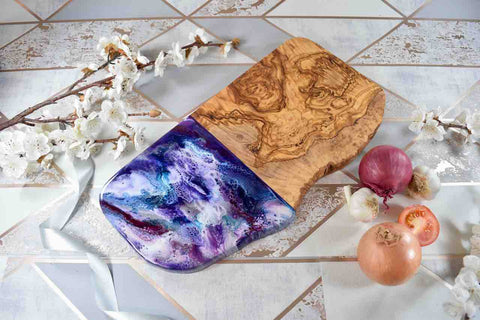

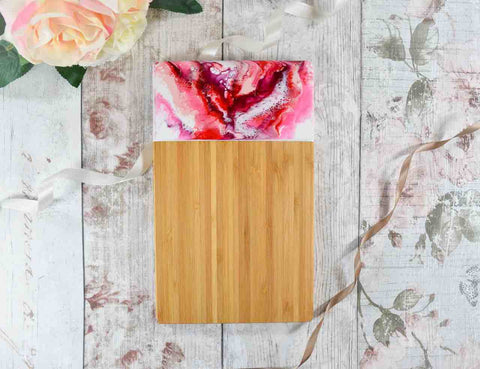
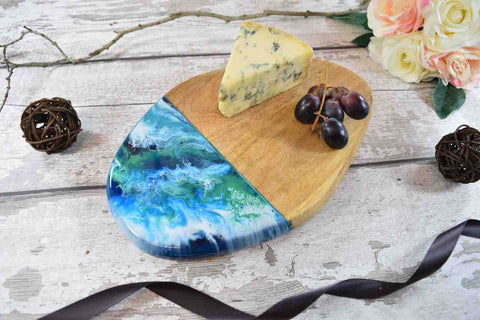


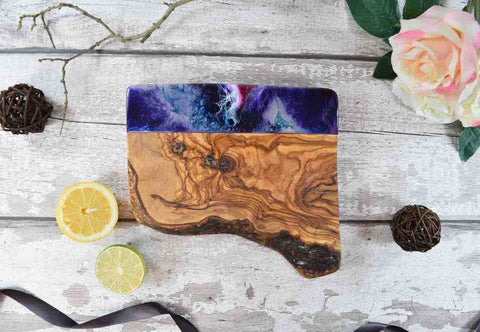
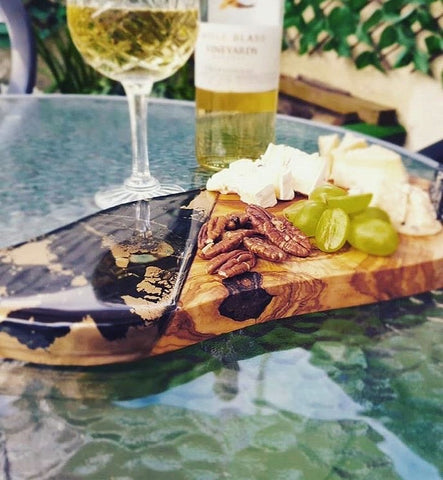
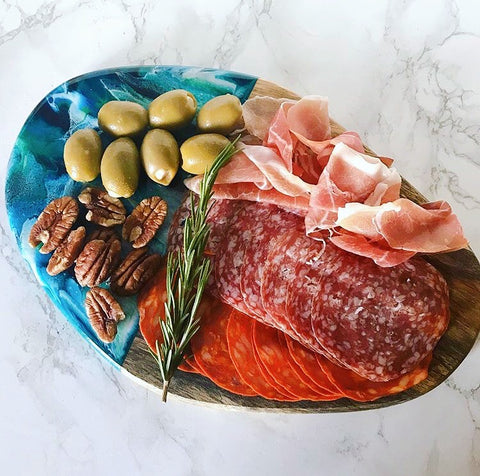

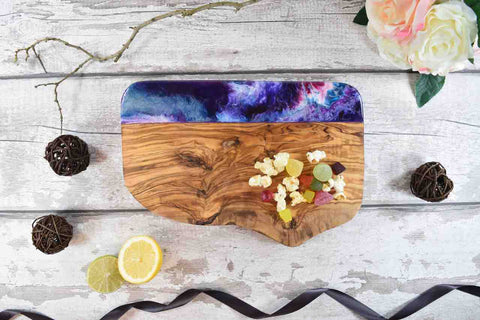



1 comment
This blog is great and informative! I love how it covers every aspect of choosing a cutting board. The wooden boards, like olive wood, with their self-healing and hygienic properties, seem like an excellent choice. However, I’m curious about the maintenance of wooden boards. What are the recommended care instructions to keep them in good condition?